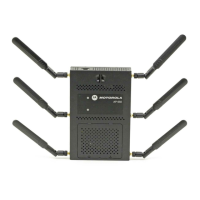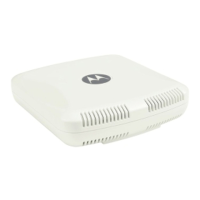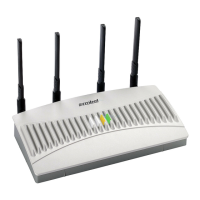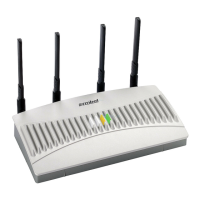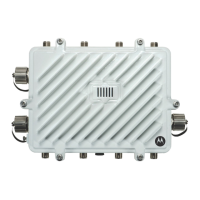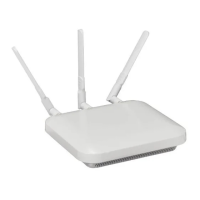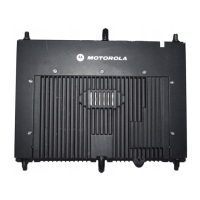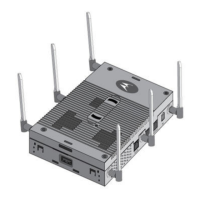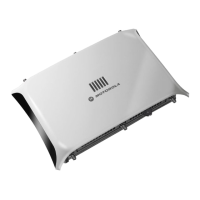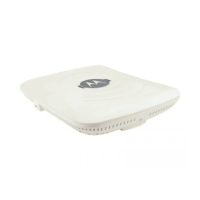Motorola Solutions AP-6511 Access Point System Reference Guide
6-6
4. Refer to the Other Settings field to define broadcast behavior within this specific WLAN.
5. Refer to the VLAN Assignment field to add or remove VLANs for the selected WLAN, and define the
number of clients permitted. Remember, users belonging to separate VLANs can share the same WLAN.
It’s not necessary to create a new WLAN for every VLAN in the network.
6. Select the Allow Radius Override radio button to allow an Access Point to override the WLAN
configuration based VLAN assigned to a wireless client and use the VLAN assigned by a RADIUS Server.
If, as part of the authentication process, the RADIUS server returns a client’s VLAN-ID in a RADIUS
Access-Accept packet, and this feature is enabled, all client traffic is forward on that VLAN. If disabled,
the RADIUS server returned VLAN-ID is ignored and the VLAN configuration (defined above) is used.
7. Select OK when completed to update the WLAN’s basic configuration. Select Reset to revert the screen
back to the last saved configuration.
6.1.1.0.1 WLAN Basic Configuration Deployment Considerations
Basic WLAN Configuration
Before defining a WLAN’s basic configuration, refer to the following deployment guidelines to ensure the
configuration is optimally effective:
• Motorola Solutions recommends one VLAN be deployed for secure WLANs, while separate VLANs be
defined for each WLAN providing guest access.
6.1.2 Configuring WLAN Security
Wireless LAN Policy
A WLAN can be assigned a security policy supporting authentication, captive portal (hotspot) or encryption
schemes.
QoS Policy Use the drop-down menu to assign an existing QoS policy to the WLAN or
select the Create icon to define a new QoS policy or select the Edit icon to
modify the configuration of the selected QoS Policy. QoS helps ensure each
WLAN receives a fair share of the overall bandwidth, either equally or per the
proportion configured. For information on creating a QoS policy that can be
applied to WLAN, see Configuring WLAN QoS Policies on page 6-34.
Broadcast SSID Select this radio button to broadcast SSIDs within beacons. If a hacker tries to
isolate and hack a client SSID via a client, the ESSID will display since the
ESSID is in the beacon. This feature is enabled by default.
Answer Broadcast
Probes
Select this radio button to associate a client with a blank SSID (regardless of
which SSID the wireless controller is currently using). This feature is enabled
by default.
Single VLAN Select the Single VLAN radio button to assign just one VLAN to this WLAN.
Enter the name of the VLAN within the VLAN parameter field that displays
when the Single VLAN radio button is selected. Utilizing a single VLAN per
WLAN is a more typical deployment scenario than using a VLAN pool.
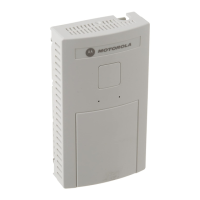
